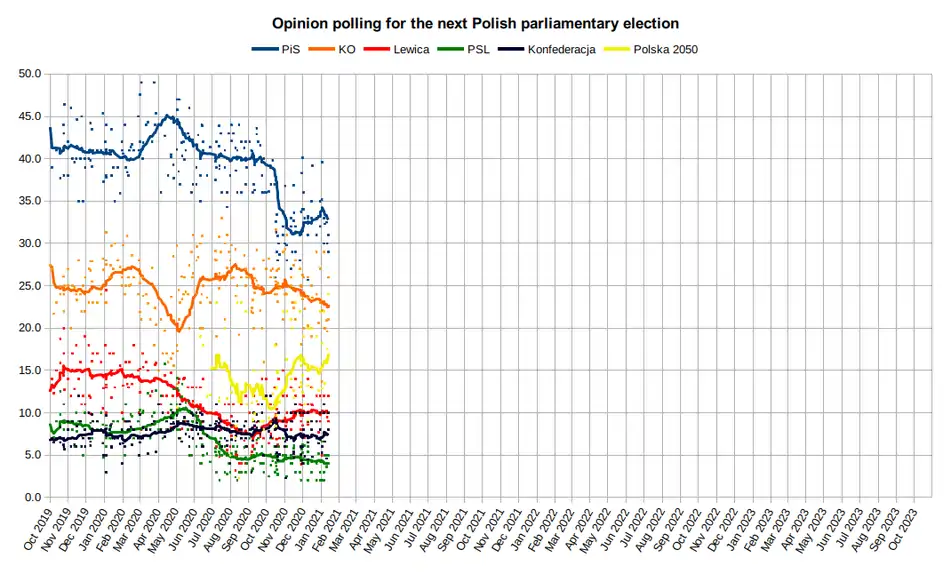2023 Polish parliamentary election
The next parliamentary elections to the Sejm and Senate will be held in the autumn of 2023, although they can be held sooner if a snap election is called, which last occurred in 2007. The most recent election, in 2019, resulted in the re-election of the Law and Justice government, albeit without a majority in the Senate.
| ||||||||||||||||||||||||||||||||||||||||||||||||||||||||||||||||||||||||||||||||||||||||||
All 460 seats to the Sejm 231 seats are needed for a majority in the Sejm All 100 seats to the Senate of Poland | ||||||||||||||||||||||||||||||||||||||||||||||||||||||||||||||||||||||||||||||||||||||||||
|---|---|---|---|---|---|---|---|---|---|---|---|---|---|---|---|---|---|---|---|---|---|---|---|---|---|---|---|---|---|---|---|---|---|---|---|---|---|---|---|---|---|---|---|---|---|---|---|---|---|---|---|---|---|---|---|---|---|---|---|---|---|---|---|---|---|---|---|---|---|---|---|---|---|---|---|---|---|---|---|---|---|---|---|---|---|---|---|---|---|---|
| ||||||||||||||||||||||||||||||||||||||||||||||||||||||||||||||||||||||||||||||||||||||||||
| ||||||||||||||||||||||||||||||||||||||||||||||||||||||||||||||||||||||||||||||||||||||||||
Electoral system
The process of election for the Sejm is through party-list proportional representation via the D'hondt method in multi-seat constituencies,[1] with a 5% threshold for single parties and 8% threshold for coalitions (with the requirements waived for national minorities).
The date of the election will be set by the President of Poland.
Political parties
The table below lists party groups currently represented in the Sejm.
Opinion polls

References
- "Election Resources on the Internet: Elections to the Polish Sejm, Part I". electionresources.org. Retrieved 2014-08-03.
Notes
- 1 MP elected on The Left list, former member of the Spring party and 1 MP from KO.
This article is issued from Wikipedia. The text is licensed under Creative Commons - Attribution - Sharealike. Additional terms may apply for the media files.
.png.webp)





